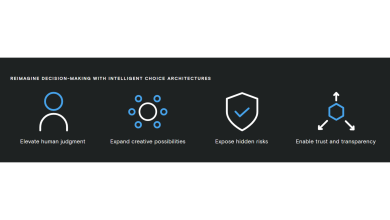
How many times have you had to prove you are human to make an online purchase? We’re constantly being asked to identify bridges in photos, decipher distorted words, or drag puzzle pieces into place to show that we are actually us, not a bot. The digital payments industry built its systems on the assumption that there should be a real person behind every transaction. But what happens if, instead of a human, the buyer is an AI tool?
Very soon, autonomous agents will begin making purchases on their own, starting with simple recurring transactions, like monthly grocery shopping, then rapidly expanding to more complex financial decisions. These agents will compare prices across multiple retailers, evaluate products based on our preferences, and complete transactions without asking for permission each time. The irony is profound: after spending decades building systems to shield away robots, we now have to develop tools that help us trust the self-acting entities we spent so long trying to keep out.
The growing complexity of approving legitimate transactions while blocking fraudulent ones becomes clearer when we look at the projected surge in chargebacks – disputes where customers contest charges and demand refunds. According to Mastercard’s 2025 State of Chargebacks report, based on research from Datos Insights, global chargeback volume is expected to jump 24% by 2028, reaching 324 million transactions (up from the 261 million forecast for 2025). The financial impact is even more striking, rising from USD 33.8 billion to USD 41.7 billion, a 23% increase fueled by the rise in digital commerce and new types of fraud amplified by AI-powered technologies.
But here’s where the story takes an unexpected turn: the regions best positioned to navigate this transformation aren’t necessarily those with the most established financial infrastructure. In fact, emerging markets are becoming the laboratories where the future of AI-driven payments is being invented.
These countries benefit from mobile-first payment infrastructure, real-time settlement systems (like Brazil’s Pix, India’s UPI, and African mobile money platforms), and crucially, a minimal need for costly, large-scale system overhauls. Moreover, having historically faced elevated levels of threats, these markets have pushed themselves to leapfrog outdated security frameworks entirely, building sophisticated systems from scratch. This baptism by fire has given them both the technical resilience and innovative mindset needed for the AI era.
That’s why many companies from these regions, including EBANX, are among the 60 organizations invited by Google to participate in the Agent Payments Protocol (AP2), an open standard designed to securely initiate and process agent-led payments across platforms. One of the biggest challenges is building a common foundation that functions seamlessly worldwide, despite vast differences in interoperability standards and infrastructure maturity across markets. This becomes even more crucial for cross-border transactions, where trust and technical compatibility between disparate systems and regulatory frameworks are fundamental to unlocking truly global, AI-powered commerce.
The new trust infrastructure
If we unravel each step of an agent doing groceries, we can examine the obstacles the payment industry is overcoming. First, the agent needs to prove it belongs to you and has permission to transact on your behalf, rather than being a bot scraping data or attempting fraudulent purchases. Then the payment gateway verifies credentials, the acquirer validates transaction details, and the issuing bank authorizes the charge. Each player applies its own fraud detection algorithms and risk thresholds, requiring the agent to carry verifiable authorization satisfying every checkpoint.
To maintain the speed and seamlessness this new era demands, the payment industry is developing sophisticated multi-layered authentication frameworks combining cryptographic signatures with real-time authorization protocols. Payment processors are also experimenting with blockchain-based identity verification, creating immutable records of authorization chains that can be audited across multiple platforms. Alongside these initiatives, we’re seeing others based on the same technology powering the agents themselves: artificial intelligence.
One concrete application of this technology involves machine learning models analyzing behavioral features in real-time, creating dynamic fraud detection systems that adapt to new attack patterns within seconds. An example is EBANX’s proprietary fraud prevention solution, which conducts instant behavioral analysis, generating over 100 distinct features to make precise decisions and risk inference across transactions. Another unique element is an asynchronous tool that automates rule creation using decision tree algorithms, reducing development time from hours to minutes. Each rule is backtested against our dataset of billions of local payments, ensuring recommendations are rooted in real market behavior. This anti-fraud suite consistently surpasses market benchmarks, achieving a 5 percentage point increase in approval rates without corresponding chargeback increases.
Choosing the right road
While much of the public debate about AI in the payments industry focuses on the role of agents in the future of digital commerce and the development of security systems, its application goes much further. Just as important as detecting fraud or facilitating online purchases is optimizing each transaction’s journey through the payment ecosystem. Think about it this way: when you order pizza, the app sends the charge to a processor, which then routes the transaction through that entire payment chain I mentioned earlier. With so many players along this path, each running their own checkpoints, choosing one route over another might mean the difference between a successful purchase and lost revenue.
EBANX’s data team has built a smart router that uses AI to analyze each transaction’s risk score and route it through the optimal path across different acquirers, issuers, and merchant IDs. This way, high-quality, low-risk transactions are directed to specific pathways that positively influence issuer decisions. When a transaction is initially declined, the system can intelligently recover it by trying alternative routes, ensuring legitimate purchases don’t slip away. This approach can increase approval rates by up to 10 percentage points. It’s a delicate balance: too conservative and you lose legitimate revenue, too permissive and fraud spikes. The AI finds the optimal point by learning continuously from billions of transactions across diverse markets.
Boosting financial inclusion
Perhaps AI’s most profound impact is redefining who gets access to financial services. Its large-scale application has the potential to drastically reduce costs, making it cheaper for institutions to acquire and retain customers. The digitalization of payment methods and the modernization of banking systems in emerging markets demonstrate how technological evolution plays a critical role in the financial inclusion of vulnerable populations.
In Brazil, Pix brought 71.5 million users into the financial system in just its first two years. As a low-cost instant payment platform, it attracted Brazilians who were previously excluded from the digital economy. In India, home to UPI – the world’s most-used real-time payment method – digitalization cut the cost of client acquisition for financial institutions in half, making lower-income clients more attractive to serve, while generating profits that enabled the development of new products.
AI can also help billions worldwide who lack credit access because they’re excluded from traditional scoring services. By analyzing digital footprints like mobile usage patterns, messaging behavior, and utility payments, AI can assess creditworthiness for populations that traditional systems reject. Every transaction becomes an opportunity to build financial identity.
Where we go from here
We stand at an inflection point where the assumptions that built the digital payments industry – humans make purchases, authentication means proving humanity, fraud detection means catching people pretending to be other people – are being fundamentally challenged. The irony is that emerging markets, long viewed as regions playing catch-up to developed economies, are actually leading this transformation. Unburdened by decades of legacy infrastructure and forced to innovate under pressure, they’ve built payment systems more adaptable to an AI-driven future.
The path forward demands more than incremental improvements to existing systems. It requires reimagining authentication, redefining identity, and rebuilding trust in an environment where the entity initiating a transaction might not be human at all. At EBANX, processing billions of transactions across over 20 countries where financial inclusion and technological innovation intersect daily, we see this not as a distant future but as an immediate reality requiring solutions today. The companies that recognize this moment not as a challenge to overcome, but as a transformation to embrace, will define what comes next.



